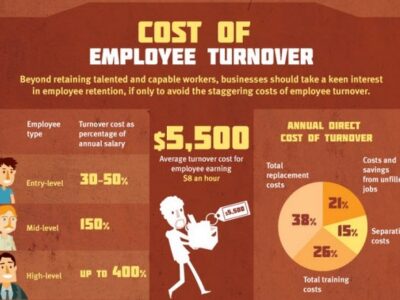With an increase in employee turnover, implementing effective onboarding best practices has become more important than ever. However, many employers continue to struggle in this area.
A Gallup survey reveals that only 12% of employees think their organization does a great job at onboarding new employees.
The article will explore what makes an effective onboarding process, why personalization matters, and practical strategies to create a memorable employee onboarding experience that sets your new hires up for success from day one.
What Is Onboarding and Why Does It Matter?
Before we dive into the rest of our onboarding guide, let’s answer the most important question: What is onboarding?
Onboarding, or an employee’s first socialization to an organization, is a series of events (including new employee orientation) designed to help your new hires:
- Feel at home on their first day by communicating the expectations, skills, and knowledge necessary in your workforce
- Understand and adapt to their new company’s culture
- Develop a sense of ownership and investment in their roles to contribute to business goals
- Understand and focus on department-specific goals and priorities
- Connect their daily tasks to broader company goals
- Lay a foundation for job satisfaction and commitment to your organization
- Connect with other employees to gain information and cooperation
A thoughtful onboarding guide is crucial. Recent data shows that one in three employees will leave a new job within the first 90 days.
Likewise, it’s essential to consider and embrace all five generations currently in the workforce, especially since statistics show that 21% of Millennials have switched jobs in the last year.
Research by Glassdoor found that organizations with the best onboarding practices boost new hire retention by 82% and productivity by over 70%. A negative onboarding experience results in new hires being twice as likely to look for other opportunities.
To better understand the importance of onboarding, we had a chat with Terry Jones, an inspirational trainer, mentor, and life coach. In a recent episode of Team Building Saves the World, Terry takes a deep dive into what makes an onboarding process successful.
“I think a good onboarding experience is an extension of the interviewing process. A lot of employees get really excited about joining the company. So I think a really good onboarding process sort of affirms the person’s decision to join the company.”
Benefits of Implementing Effective Onboarding Best Practices
The first day on the job can be a stressful experience for both the company and the incoming employee. Learning how to onboard a new employee effectively can help them feel more comfortable, empowered, and welcomed.
Here are several benefits of following onboarding best practices:
Higher Retention Rate
A well-organized onboarding experience can improve your retention rates by 82%, according to the Brandon Hall Group.
With great talent harder to come by, your retention strategy should start from day one. This is because employees who’ve had a positive onboarding experience are more likely to remain with the company longer and maintain high levels of engagement.
Increased Employee Engagement
Speaking of engagement, a personalized onboarding experience can make your employees feel more connected to the company and its values.
To keep your new hires engaged, ensure that you clearly communicate how their work will contribute to the company’s growth and why it matters.
As Terry points out, “A successful onboarding process helps the employees themselves to see where they fit in, in the larger picture and the larger success of the company.”
“It really sets the employee up for success, too,” continues Terry. “The company has thought methodically about how to make sure that it’s setting this person up for success within their first 30, 60, and 90 days.”
Improved Productivity
For some employees, it can take months for them to fully ramp up and start delivering results. A powerful onboarding process can help speed up the process.
One study by the SHRM Foundation found that a detailed and well-thought-out onboarding process can help increase employee productivity by 50%.
Strong Company Culture
Fostering a strong and positive company culture starts from the first time a candidate makes contact with your company. Take this opportunity to present your company’s core values, how you treat people, and how their work will contribute to the company.
An onboarding process tailored to your new employee’s needs will make it easier for them to assimilate into the culture, creating a true sense of belonging.
8 Onboarding Best Practices To Create an Exceptional Experience
In the Team Building Saves the World podcast, Terry Jones emphasizes that having a strong onboarding process sets the employee up for success:
“When the employees feel good about having joined the company, they’re able to get up and running very quickly. They feel like you’ve actually set them up for success. They feel welcomed into the company.”
Here are eight effective onboarding tips to create a memorable experience for your new hires:
1. Start Onboarding Before Day One
The first onboarding best practice is all about when you begin—don’t wait until it’s your employee’s first day on the job to start!
To reduce the anxiety and fear of judgement when starting a new job, send your new hire a plan of what their first few days will look like well in advance. This will help them know what to expect so they can ultimately feel more comfortable.
Terry adds, “The worst thing you can do is have a new employee come in and it’s like, ‘Okay, here’s your desk. Just do it.’”
2. Develop a Mentorship Program
Pair your new hires with more experienced employees to help them familiarize themselves with the job more quickly.
Working hand-in-hand with a coworker will help them complete the onboarding process more efficiently and build relationships with colleagues early on.
“A shadow experience is really, really invaluable… they’re able to practically see it from the ground level to become more confident,” commented Terry. “It helps the employees see where they fit in the larger picture and the success of the company.”
For bonus points, consider flipping this relationship into a reverse mentorship experience after the new employee has completed the onboarding process.
3. Create Engaging Onboarding Materials
Many employees dislike sitting at a desk for hours reading through dry onboarding materials. Don’t you?
It’s time to add an interactive element to your onboarding process. Rather than giving your new hires documents to read, walk through your processes with animated explainer videos, colorful illustrations, or even games.
4. Organize Team Building Events
Team building events give your new hires an opportunity to interact with the team, build relationships, and connect on a more personal level.
TeamBonding’s Infinite Loop and Build-a-Boat events are excellent, fast-paced challenges designed to get your teams working together. These popular programs are sure to boost morale and encourage positive feedback between employees.
For hybrid and virtual teams, consider organizing a Mixology class. This hands-on virtual event is designed to create a fun and stimulating environment for your new employees and bring down any barriers between team members.
Regardless of where your employees work, don’t forget about the classic go-to of using icebreaker questions to help new hires settle in. These are easy to throw in at the beginning or end of meetings to lighten the mood a bit!
5. Schedule Regular HR Check-Ins
Every employee wants to be valued and understood by their employer. This is especially true for new hires who are not fully integrated into the company culture.
Schedule regular check-ins between your new hires and the HR team. These meetings will provide your employees with an opportunity to ask questions and offer feedback.
6. Create a Personalized Success Roadmap
Help your new employee set goals during the first 30, 60, and 90 days on the job. Creating a success roadmap will help your people visualize their goals, identify positive outcomes, and prepare for any potential challenges and obstacles.
To track employee progress through the success roadmap, make sure to follow up with regular meetings with the employee to discuss any issues they encounter, and always praise them for their hard work.
7. Help Employees Understand Themselves
The best way to plug in new hires where they will be passionate is by helping them understand themselves.
Creating an environment where employees find fulfillment will become increasingly important as Millennials and Gen Z continue to take over the workplace and strive to find a place where they can express themselves.
As IBM found, the more socially connected employees are, the better they perform. They found that each new connection boosts revenue, employee engagement, motivation, and productivity while reducing turnover rate and stress.
8. Incorporate Breakthrough Experiences
Consider unique team building activities like Breaking Barriers. This program offers participants the opportunity to succeed in something that seems impossible—breaking a board with their hand or foot!
Breaking a board requires complete mental control. It involves:
- Courage: The courage to strike something harder than the human body
- Commitment: The commitment to follow through with the decision
- Technique: The proper technique to perform the maneuver correctly
- Concentration: The concentration to focus energy into a few square inches
A common thread among all participants in Breaking Barriers is the empowerment they feel after breaking the board. You can hear it with each board breaking and the smell of pine as it fills the room—a reminder of the transformation taking place.
It’s the look of astonishment followed by a look of total clarity for each and every participant who breaks a board. It’s the moment when a person’s body shifts from a place of fear to one of confidence. And we’ve seen it forever change lives.
The Impact of Team Building on Onboarding Success
Workplace collaboration equals business success. Innovation, improved communication in teamwork, and creativity are fostered when people feel comfortable around their coworkers.
A successful team building event helps people bond and contributes to a creative workplace. Socializing team building activities is also one of the best ways to increase office productivity, problem-solving, and morale, which means higher quality work.
Team building is part of onboarding best practices because it leads to these workplace outcomes:
- Improved morale
- Enhanced communication
- Stronger office relationships
- Higher quality of work
- Increased motivation
- Greater confidence to take on new challenges
- Enhanced creativity and innovation
- Improved problem-solving skills
- Minimized perception of hierarchy
Terry put it perfectly when he said, “A detailed, well-thought-out onboarding process says that we don’t just care about the work—we care about you.”
“If you’re taking the time to properly onboard them, you’re setting the person up to be successful. If that person is more successful, the department is more successful… the company will be more successful,” continues Terry. “To get the most from a payroll expense, you need an impactful, structured onboarding process.”
Ready To Leverage Onboarding Best Practices for Success?
Remember, a strong onboarding process focuses on people, not paperwork.
These onboarding best practices will help you create a process with clear goals, dynamic content, and tools for building connections, and it’ll help increase employee engagement, improve productivity, and lead to better retention rates.
To learn more about how you can improve your onboarding process, be sure to listen to the entire Onboarding podcast episode with Terry Jones.
If you’re interested in fostering a stronger connection between your new hires and current employees, check out TeamBonding’s engaging team building activities to make your onboarding process truly memorable.
Want some help? Contact us today to start customizing the perfect experience for your brand!

















